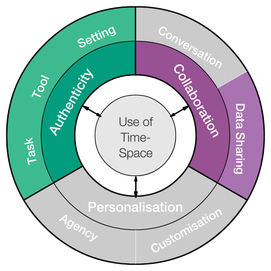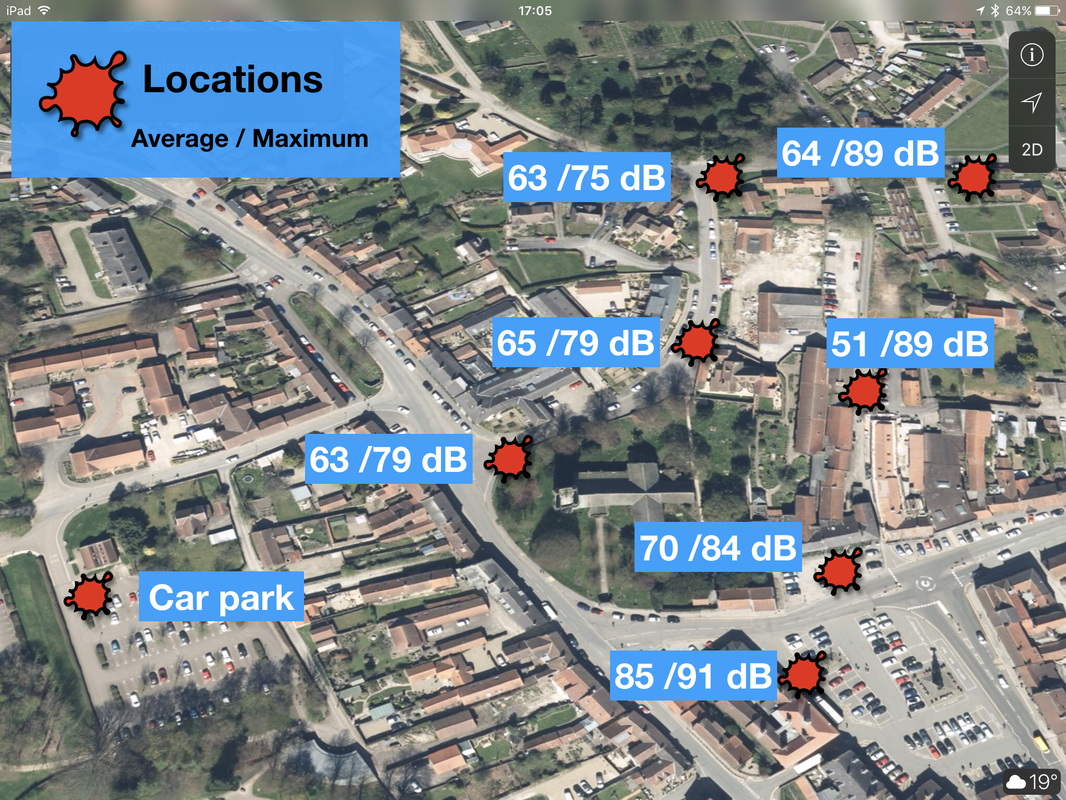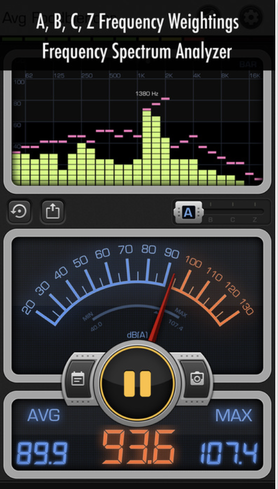Measuring levels of noise in a town
|
|
Focus: Authenticity - Tool and Task |
Vertical Divider
IntroductionThis scenario explores how trainee teachers use mobile devices to support data collection during fieldwork. The scenario takes place in Helmsley, a small British town. The trainees were asked to measure the sound levels at number of places in the town using their devices and a noise measuring application.
The scenario illustrates how mobile technologies can be used in a situated context where the students collect and interpret data using the tools on the device and some installed apps. Objectives of this scenario:
Description of the learning scenarioIn the town the students measured the average and the high peak of the noise in several locations. After sharing their data they built a "map of noise" showing these levels (see opposite).
First they have to decide:
They also have to consider the accuracy and reliability of the noise measuring application that they are using. Impact of the learning scenario on studentsThe students were able to explore the different noise levels how these were being produced - also to consider how this might impact on the quality of life for the inhabitants. They were also able to explore how different noise sources had differing decibel levels.
The collection of data in real-time is an important part of field work in science and environmental studies. Students were able to also consider the variability and accuracy of data collection tools and how they could compensate for this in their data collection and recording. |


The sound map created as part of the activity
Decibel 10 - an example of a noise measuring application
|
How could this scenario be extended?To make this scenario more meaningful you could focus on different objective and reasons for collecting the data. These foci would need different planning; but some examples are:
|
Students involved in the scenario
Jon Hoem (Western University of Norway, Bergen, Norway); Seán Ó Grádaig (School of Education, NUI Galway, Republic of Ireland); Mutfried Hartmann (Pedagogical University of Karlsruhe, Germany); Frank Thissen (Stuttgart Media University Stuttgart, Germany). |


